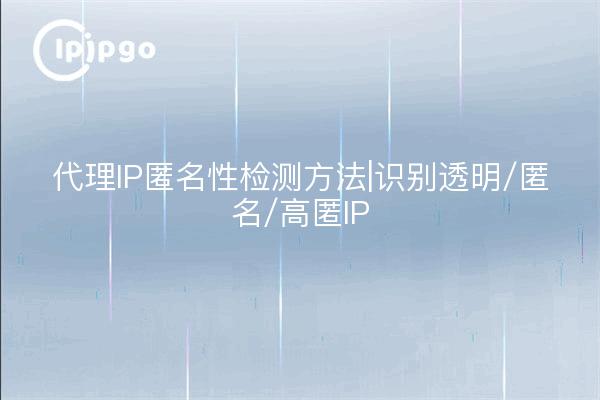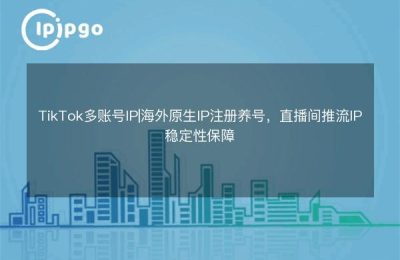
Why is it still recognized by websites after using a proxy IP?
Many users, when using proxy IP, obviously have hidden the real IP address, but the anomaly is still recognized when accessing the target website. This is often because the anonymization level of the proxy IP is not enough. Proxy IPs on the market are categorized intoTransparent proxies, normal anonymous proxies, high anonymous proxiesthree types, the difference in their concealment can be tenfold or more.
Three-minute self-assessment of your agent type
Open a browser and visit any website that displays an IP (e.g. whatismyipaddress) and observe the IP information displayed on the page:
| test item | Transparent Agent | General anonymous | High Stash Agents |
|---|---|---|---|
| Whether to expose the real IP | be | clogged | clogged |
| With or without proxy logo | be | be | clogged |
| Website Recognition Success Rate | 100% | 60% | <5% |
via ipipgo'sReal-Time Proxy Detection Interface, you can get a more detailed analysis report. In the request header if you see theX-Forwarded-FormaybeViafield indicating whether a transparent or normal anonymous proxy is being used.
Four core features of high stash agents
A true high stash agent must fulfill the following conditions:
1. Complete divestiture of proxy features: no proxy server information is carried in the request header
2. Dynamic IP Rotation Mechanism: use different exit IPs for each request
3. Real Residential IP Resources: IP address from home broadband not server room
4. Protocol Integrity Support: Simultaneous compatibility with HTTP/HTTPS/SOCKS5 protocols
In the case of ipipgo, for example, its high stash proxy service uses theFamily Residential IP PoolThe maximum survival time of each IP is no more than 15 minutes, and all proxy traces are cleared automatically. By simulating the online behavior characteristics of real users, it can reduce the recognition rate to the lowest level in the industry.
Hands-on demonstration of three detection methods
Method 1: Request header detection
Enter it in the terminal:
curl -x http://代理IP:端口 https://httpbin.org/headers
If the keywords proxy and via appear in the returned results, it means that the proxy anonymity is not enough.
Method 2: Protocol Emulation Detection
Using the Wireshark packet grabbing tool, observe the TCP handshake process three times. The high stash proxy will completely disguise itself as an end user, while the regular proxy will expose the protocol handshake characteristics.
Method 3: Behavioral association detection
Visit 10 different websites in a row and check if any of the following occur:
- Blacklisting of the same IP on multiple unrelated websites
- Suddenly asking for CAPTCHA verification.
- Abnormal page load speed fluctuations
QA Frequently Asked Questions
Q: Why are high anonymous agents still recognized?
A: The following conditions may be encountered: 1. The region to which the IP belongs does not correspond to the place of registration of the account 2. The frequency of requests exceeds the normal range 3. Cookies carry historical fingerprints. It is recommended to match with ipipgo'sGeo Location Matching ServiceUse.
Q: How do I verify the real resources of an agent?
A: Three verification steps: 1. check whether the ASN attribution of the IP is an ISP 2. query the whois information of the IP 3. use traceroute to trace the routing path. Regular service providers such as ipipgo support full dimensional verification.
Q: Do all sites need a high stash proxy?
A: It needs to be decided according to the detection strength of the target website:
- Social media/e-commerce platforms: must be high stash agents
- Corporate website/informational website: ordinary anonymity is sufficient
- Government/financial institution websites: dedicated customized solutions recommended
When choosing a proxy service, it is recommended to prioritize a service like ipipgo that has aReal Residential IP Resource PoolThe service provider. Its dynamic IP network covering more than 240 countries and regions around the world is particularly suitable for application scenarios that require high anonymity, and can effectively avoid operation interruptions due to the exposure of proxy features.








